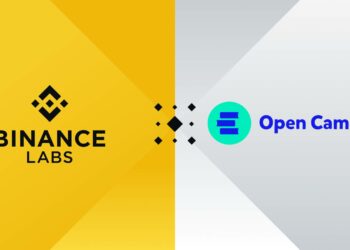What is Arbitrum?
Arbitrum is a layer 2 solution designed to improve Ethereum smart contracts specifically to increase their speed and scalability, while adding additional security features to boot.
The platform is designed to allow developers to easily run unmodified EVM contracts and Ethereum transactions on layer 2, while still benefiting from Ethereum’s excellent layer 1 security.
Arbitrum was built to address some of the shortcomings of current Ethereum-based smart contracts – such as poor efficiency and high execution costs – that have rendered the user experience on Ethereum unsatisfactory. good and increases transaction costs.
Arbitrum uses a technique known as transaction aggregation to record batches of submitted transactions on the Ethereum main chain and execute them on a cheap, scalable layer 2 sidechain while leveraging Ethereum to ensure accurate results. This process helps to offload most of the computational and storage burden that Ethereum currently has to bear, and allows DApp layers based on layer 2 to flourish.
Arbitrum is a type of technology known as an optimistic rollup. It allows Ethereum smart contracts to scale by transferring messages between smart contracts on the Ethereum main chain and contracts on the layer 2 Arbitrum chain. The majority of transaction processing is completed on layer 2, and the results of this are recorded on the main chain – significantly improving speed and efficiency.
It is optimistic in the sense that any validator can post a rollup block and validate other blocks, while the term aggregation is used to describe how public information can be used to reconstruct the complete history of the sequence from an optimized log of the event. The Arbitrum protocol ensures that code will run correctly as long as all validators are honest, making the network resistant to collusion and other forms of attack.
Future versions of Arbitrum will also have two other modes: Channels and AnyTrust sidechains.
As with many blockchains, individual nodes can choose to participate in the Arbitrum chain. Validator nodes participate in observing the state of the chain, and full nodes help in aggregating layer 1 transactions. The aggregators who send transactions to the layer 1 chain earn rewards paid in ETH, while the rest of the user’s transaction fees are distributed to other network participants – such as validators.
Arbitrum introduces a challenge step for rollup blocks, which allows other validators to check the correctness of a block and issue a challenge if they believe it to be false. If a block is proven incorrect or a challenge is proven to be unreasonable, lying validators will have their stake confiscated, ensuring validators always play fair or risk the consequences. fruit.
The platform also has its own custom virtual machine, the Arbitrum virtual machine (AVM). This is the execution environment for Arbitrum smart contracts and lives on top of EthBridge – a collection of smart contracts that communicate with the Arbitrum chain. Ethereum-compatible smart contracts are automatically translated to run on the AVM.
Highlights of Arbitrum
High EVM compatibility
Arbitrum is considered one of the most EVM-compatible synthesis software. It is compatible with EVM at the bytecode level, and any language that can compile to EVM will work just fine – Solidity and Vyper for example.
This makes it easy to develop, as developers don’t need to have a good understanding of a new language before building on Arbitrum.
Powerful tools for developers
The Arbitrum development team is working to reduce the barriers to entry when building a layer 2 solution. As a result, they have created comprehensive development documentation for Arbitrum and developers can start using. existing tools for Ethereum.
Low transaction fees
As a Layer 2 scaling solution for Ethereum, Arbitrum is not only designed to enhance Ethereum’s transaction throughput, but also minimize concurrent transaction fees.
Thanks to its extremely efficient rollup technology, Arbitrum is able to cut fees to a fraction of what they are on Ethereum, while still providing enough incentives for validators.
Fair launch
Arbitrum has been running several testnets since October and is currently working on the mainnet for developers. Unlike many other Layer 2 scaling solutions, Arbitrum does not have its own native utility token.
Furthermore, all interested developers will have time to get up and running before Arbitrum is released to the public. Arbitrum recently committed to giving all 250+ registered development teams to build on the developer mainnet at least two weeks of development before releasing Arbitrum One to everyone.
Well-developed ecosystem
Arbitrum is currently working on multiple Ethereum DApps and infrastructure projects, including Uniswap, DODO, Sushi, and dozens of others.
summary
Arbitrum is a very potential project to develop in the near future. At the same time, the project has also taken its first steps when it has cooperated with many major partners in the industry such as Uniswap, The graph, Chainlink … to integrate these projects into layer 2 of Arbitrum. Through this article, you must have somewhat grasped the basic information about the project to make your own investment decisions. Coinlive is not responsible for any of your investment decisions. Wish you success and make a lot of profit from this potential market.







